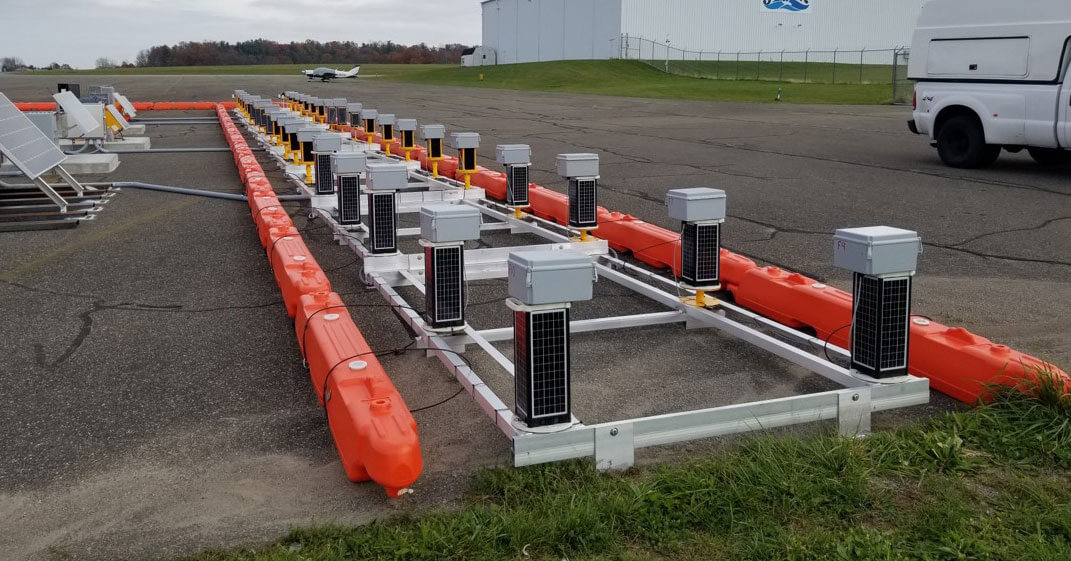
May 27, 2022
The FAA is going green, testing solar-powered airfield lighting at Penn Yan Airport (PEO) in the Finger Lakes region of New York. Solar lighting products have the potential to provide standard levels of lighting at airports without connecting to the electrical grid, thereby reducing an airport’s overall carbon footprint and making it possible to equip an airfield that would otherwise have little to no lighting.
“This initiative is primarily about safety, particularly at airports that don’t have resources to install full lighting systems,” said Ryan King, acting manager of the FAA’s Airport Safety Research and Design Section at the William J. Hughes Technical Center in Atlantic City, NJ. The center supports the FAA’s mission by conducting the necessary research and development required to enhance the safety of operations at our nation’s airports, and a number of these projects have the potential to benefit business aviation.
King said this test case is enabling the FAA to evaluate performance, including that of the light itself, the battery and the panel’s ability to receive solar energy. It will also allow the agency to evaluate the costs of solar-powered lighting systems.
The new lighting systems must be able to deliver the standard light output, in terms of photometrics such as colors and intensities for the necessary duration, solely through solar energy.
The FAA has already tested the photometrics in a lab setting, but different locations in the U.S. can present challenges for solar powered lights. At Penn Yan Airport, the FAA plans to learn how the lights perform at a location with a lot of cloud cover, potential snow accumulation on the solar panels, and prolonged cold temperatures. By testing for at least one year, the agency will generate performance data from four seasons of environmental conditions.
Additional tests are planned in Arizona starting this fall and later in Washington state, providing three very different sets of climate conditions. Eventually, the results of these tests could result in an FAA Engineering Brief for airports, with guidance on performance of solar-powered lighting systems in different weather conditions.
“The capability to install effective solar-powered lighting systems could benefit all types of airports – but especially rural, small GA airports – without sacrificing safety,” said King. The performance of solar-powered lighting systems must meet the FAA’s standards for lighting systems, but he believes these tests will demonstrate those standards can be met at many airports.


 International Business Aviation Council Ltd.
International Business Aviation Council Ltd.